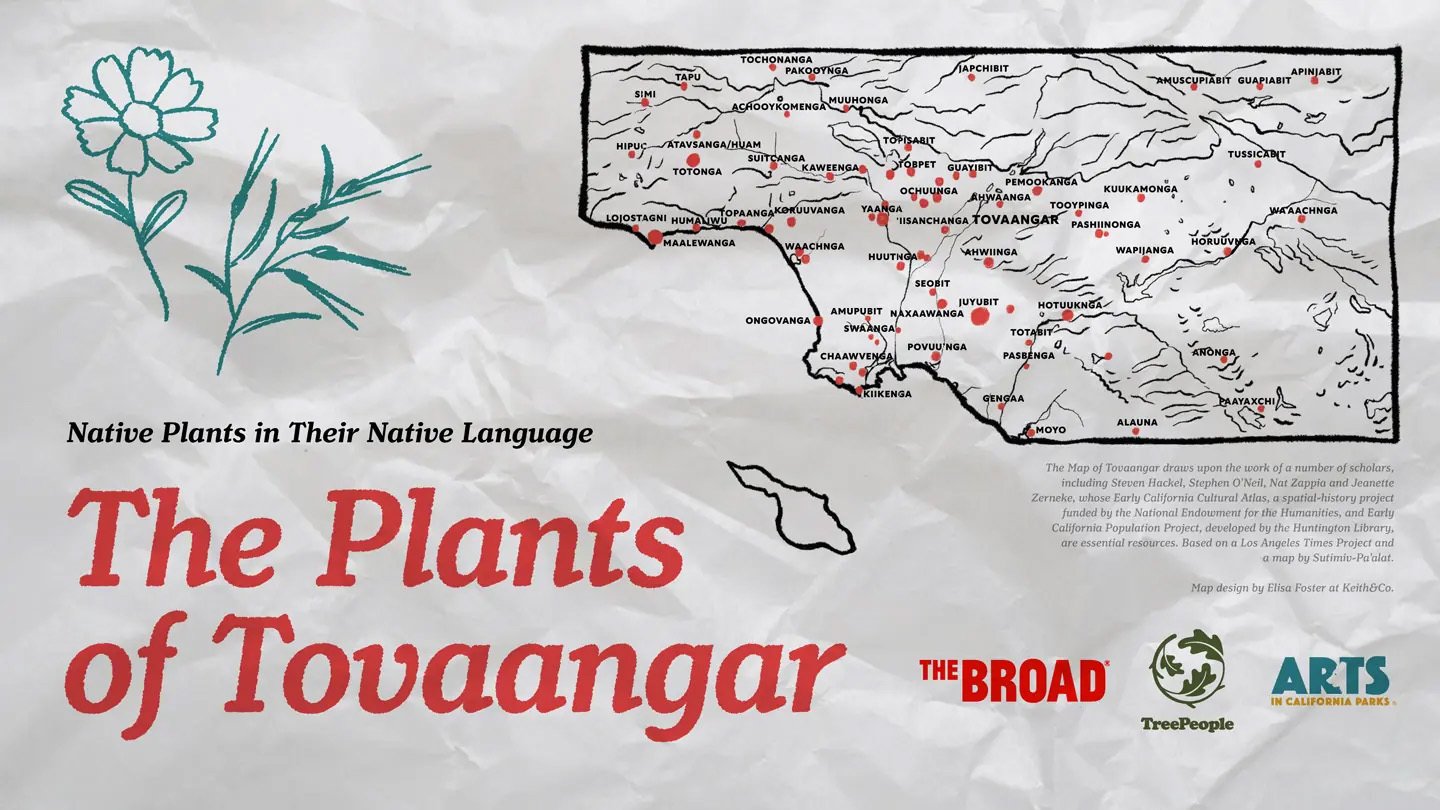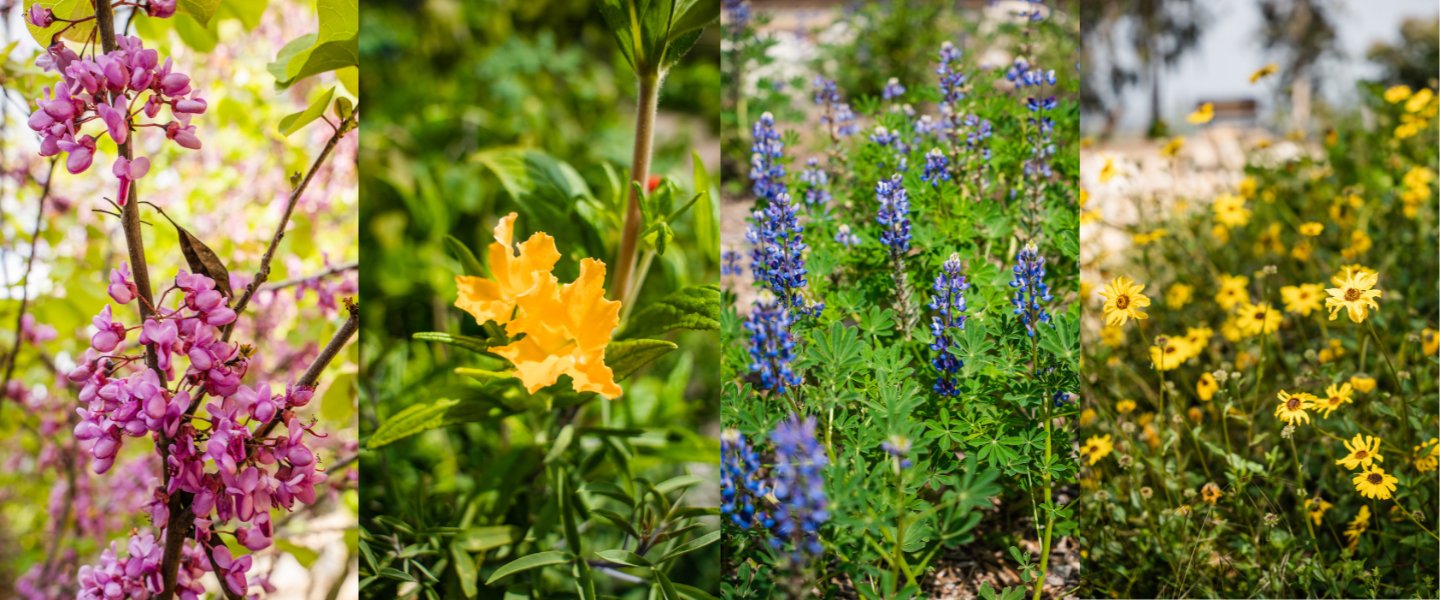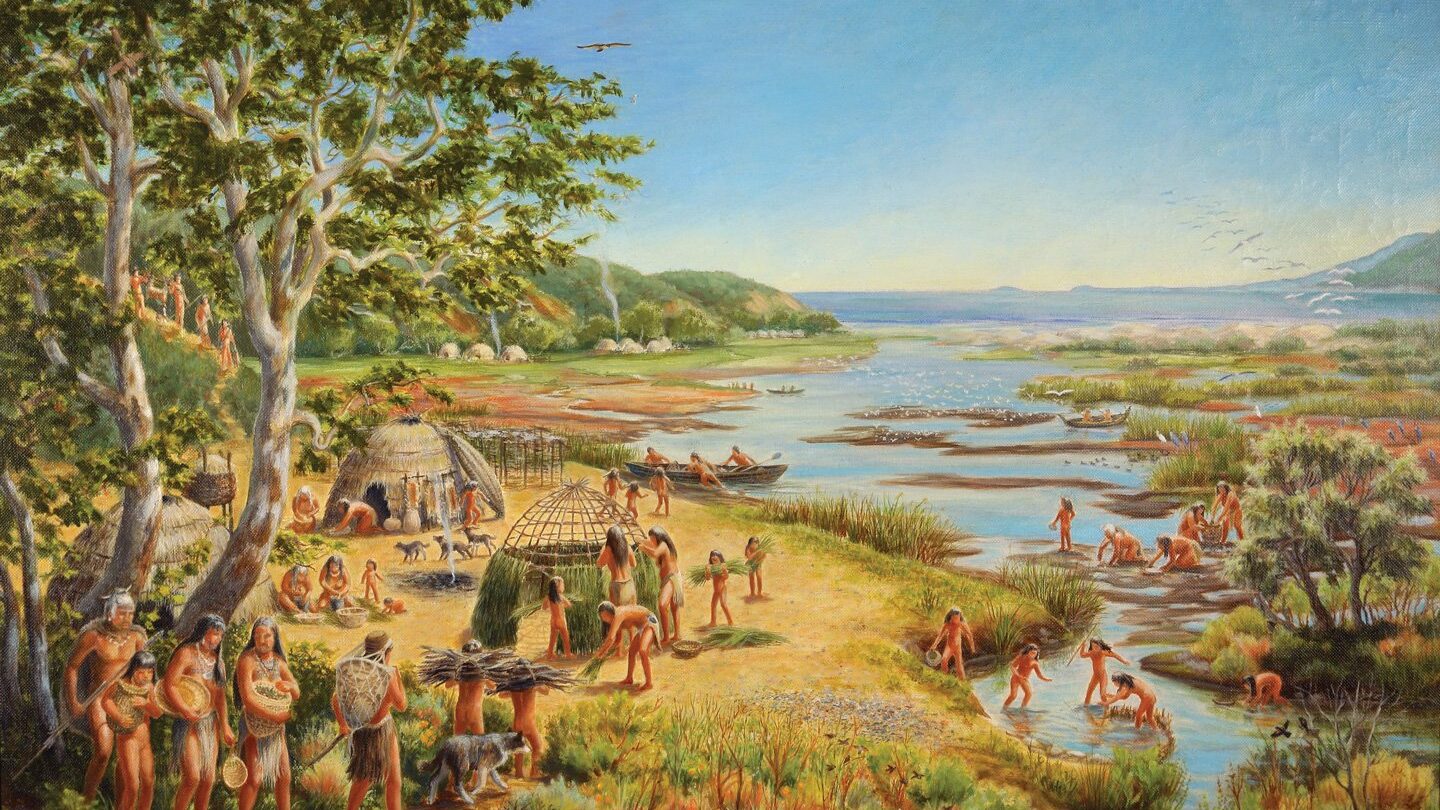

The Tongva Names of Native Plants
TreePeople has worked with the Gabrielino-Tongva Language Committee to document and share the Tongva words for plants native to this region. By offering this interactive audio tour of Coldwater Canyon Park, our goal is to not only deepen visitors’ knowledge of the cultural and historical significance of these plants, but to honor the history and language of the indigenous people who have long lived in this area and tended to its lands.
Language is a tool that helps shape our memories, identities, and deep relationships to place. When the Tongva language is listened to and spoken on this land, it affirms that Indigenous presence is not a thing of the past, but an enduring and living truth. Long before this area became the headquarters of TreePeople, the place we now call Coldwater Canyon Park was part of the traditional homelands of the Tongva people. We hope this tour will help each visitor to our park remember that this land carries important stories and traditions that are far older than any modern building or institution.
This project is made possible through support from The Broad and Arts in California Parks Local Parks Grant Program.
About Tovaangar
Tovaangar is the ancestral and current home of the Tongva people. It encompasses the entirety of what we now know as the Los Angeles Basin as well as the four southern Channel Islands. Listen to Tongva elder and language researcher Virginia Carmelo as she offers a land acknowledgement and brief history of this region:

Rediscovering Plant Names
The plant names presented in this tour were cataloged as part of a years-long effort by the Tongva Language Committee and Dr. Pamela Munro to preserve and document the first language spoken in this region. The work was completed in 2024.
To catalog these indigenous plant names, members of the committee used archival materials, cultural knowledge, and information about nearby tribal languages to verify and–in some cases–rediscover the Tongva peoples’ words for these native species. These words played and continue to play an important role in their culture and traditions.
Carmelo says the process of reconnecting with the Tongva language and the names of these plants has served as a “huge stepping stone” between the indigenous people of Tovaangar and their ancestors.
“It’s not like we lost our shoes or our brush. [The language] was never lost. It was taken away from us in a very destructive manner,” says Carmelo. “Our belief and the consideration of our ancestors is that the more that we can speak in their language, the closer it brings us to that connection that we have with them, but also … the remembrance of how they interacted with the land. They didn’t dominate it. They lived with it, and they helped it, and the land helped them.”
Listen to Carmelo’s account of how these names were documented, and why it’s so important to preserving the legacy and culture of the Tongva people:
Plants & Places
Learning about the Tongva names of these plants doesn’t just give us insight into the history and culture of the indigenous people of this region—it helps us better understand how this land looked in an era before industrialization and urbanization transformed it completely. According to Carmelo, the names of many indigenous villages were directly inspired by the native ecosystems that once thrived there.
“It’s important to know that Tongva people—Toongvetam—knew their land. They worked their land and lived in harmony with their land and kept their land in a good way so that there would be abundance of food, abundance of the plants that they needed from year to year,” she says. “And because certain places were fruitful in certain plants, village names would be named many times … after the plant that was close by.”
Listen to Carmelo explain the connection between plants and placemaking in Tongva communities:
Plants & Their Tongva Names
California grape

California wild rose

Catalina cherry trees

California lilac

Chamise

Coast live oak

Elderberry

Fuchsiaflower gooseberry

Lemonadeberry

Manzanita

Narrowleaf milkweed

Poison oak

Sacred datura

California sagebrush

Sugarbush

Valley oak

Western sycamore

Wild cucumber

Yucca

Our Partners
This project has been developed with The Broad as part of the project Social Forest: Oaks of Tovaangar. To learn more about Social Forest, click here; to bring this project to your classroom, click here.
The Plants of Tovaangar is funded in part by the Arts in California Parks Local Parks Grant Program, administered by Parks California. Arts in California Parks, a new program from the California Department of Parks and Recreation, supports artists, culture bearers, California Native American tribes, and communities in creating artwork that offers perspective on our past and present and help us imagine our potential. Please visit ArtsinCaliforniaParks.org for more info.


